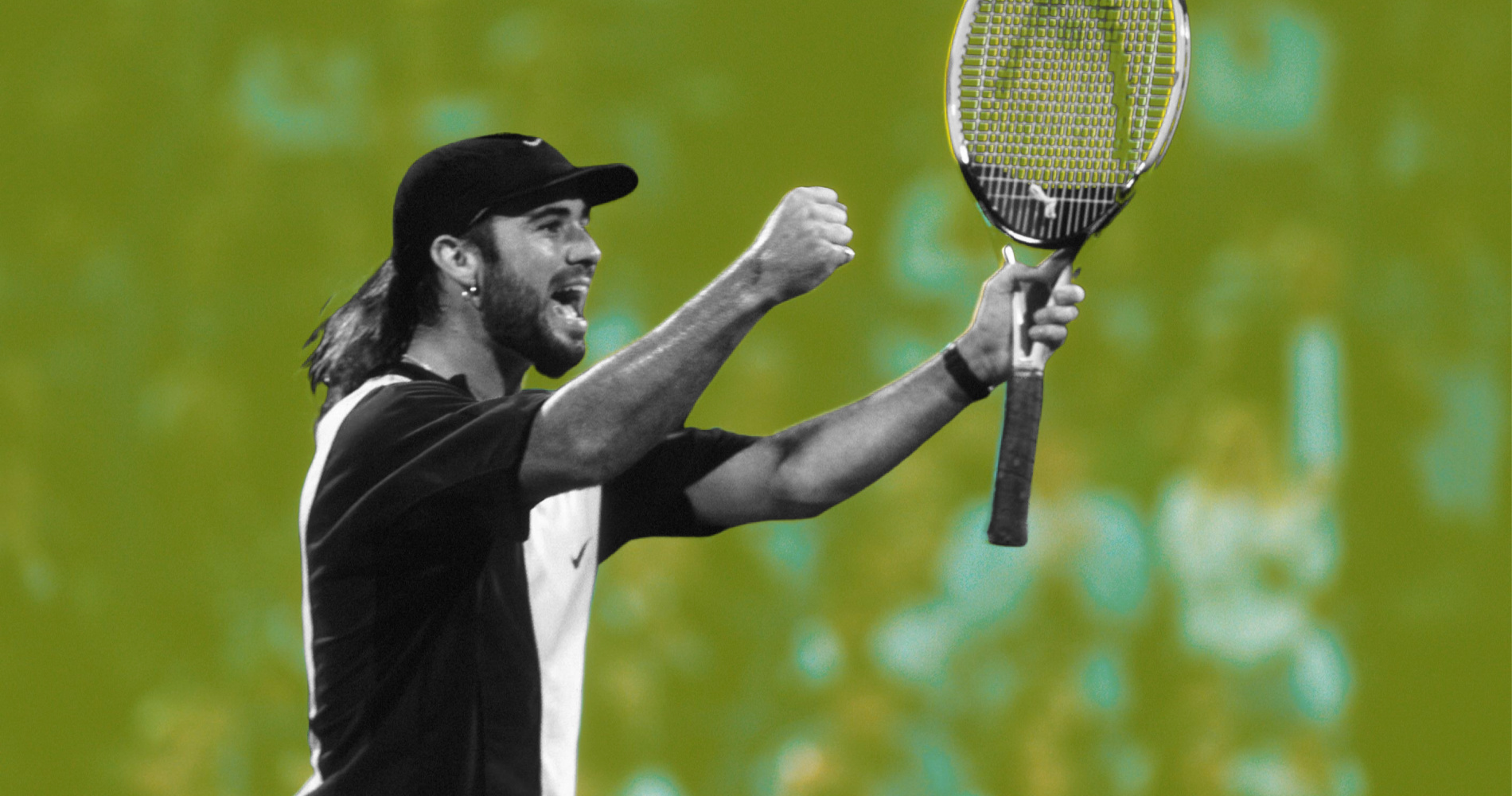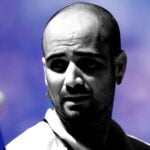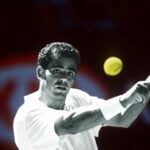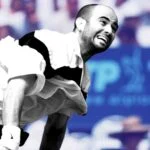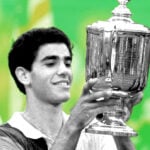March 26, 1995: The day Andre Agassi beat Pete Sampras to win Miami
Every day, Tennis Majors looks back at the biggest moments in tennis history. On March 26, 1995, Andre Agassi beat Pete Sampras to win the Miami Open title
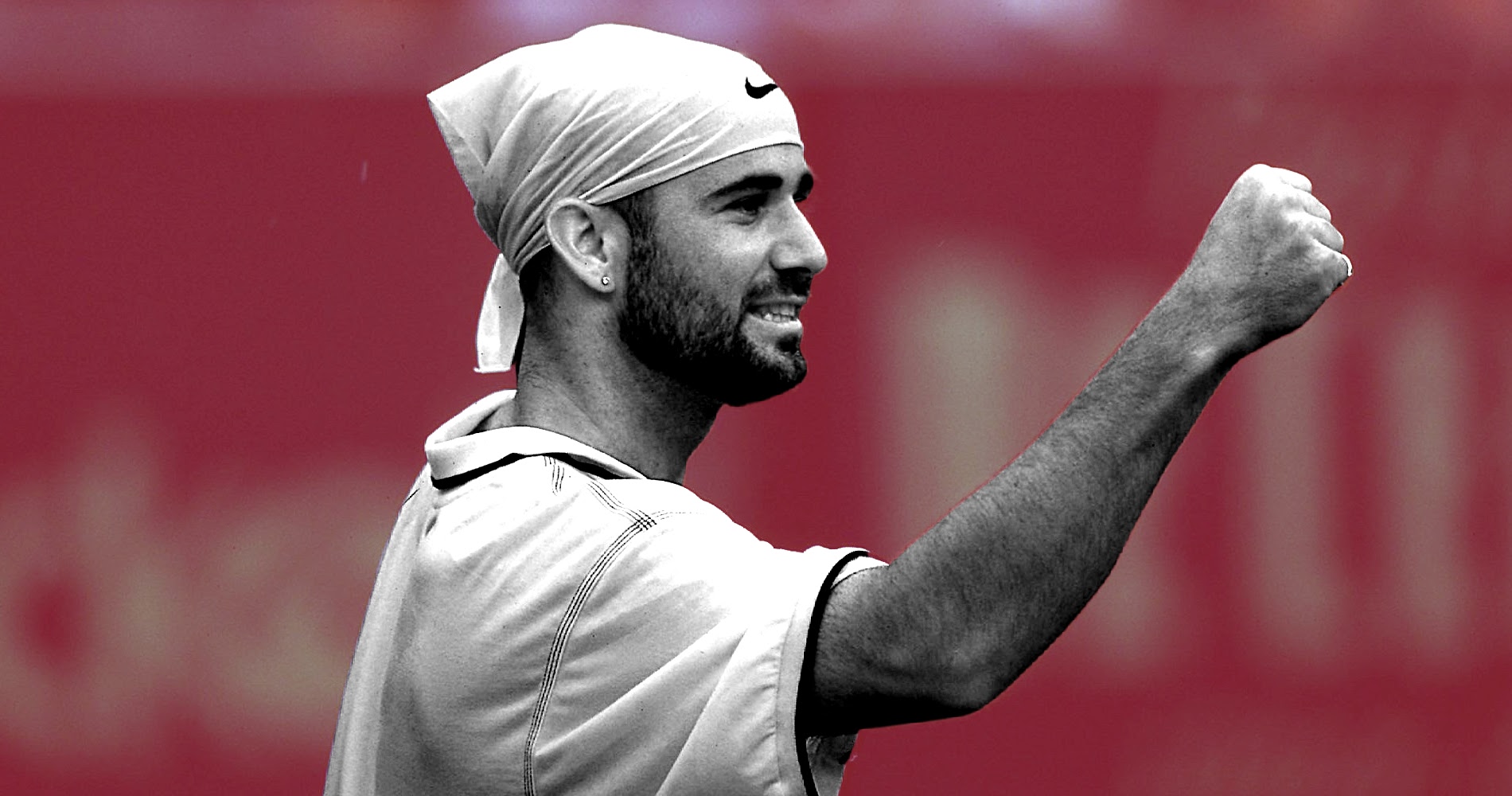 Andre Agassi OTD 26_03
Andre Agassi OTD 26_03
What happened exactly on that day
On this day, March 26, 1995, in the Miami final, Andre Agassi defeated Pete Sampras in the 15th instalment of their rivalry, and third of 1995, as it reached its peak (3-6, 6-2, 7-6). After their first encounter, won by Agassi in the Australian Open final (4-6, 6-1, 7-6, 6-4), and their second clash in the Indian Wells final won by Sampras (7-5, 6-3, 7-5), the two best players in the world went into a third-set tiebreak for this third big final of the year. It was also the first time that the Miami final featured the two top-ranked players.
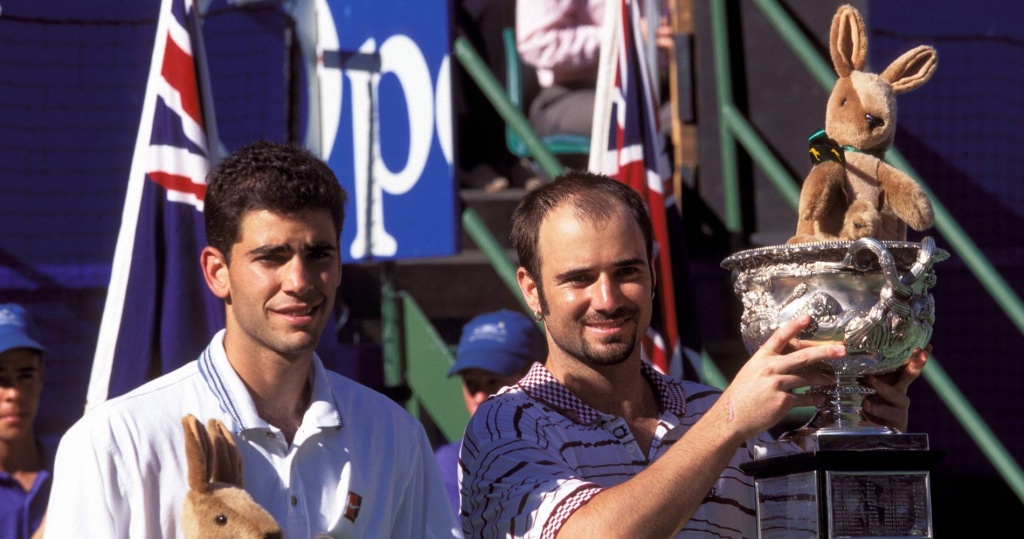
The players: Andre Agassi and Pete Sampras
- Andre Agassi, the Las Vegas Kid
Andre Agassi, the Las Vegas Kid, was one of the biggest stars in tennis history. He had turned professional in 1986 and he had soon become famous, thanks to his amazing tennis skills but also to his interesting outfits, including the iconic denim shorts and the neon pink compression shorts, worn beneath his tennis shorts. Taught by his father and bred at the Nick Bollettieri Academy, his game relied on a great return (the best of his time) and on taking the ball on the rise on both sides with incredible timing and power, which was revolutionary at the time, and later copied by generations of tennis players.
Agassi’s breakthrough year was 1988: not only did he claim six titles, but he also reached the semi-finals at Roland-Garros, defeated by Mats Wilander (4-6, 6-2, 7-5, 5-7, 6-0), and at the US Open, where he lost to Ivan Lendl (4-6, 6-2, 6-3, 6-4). In the years 1989-1991, despite many great results, Agassi, who had been the first American man from his generation to take the spotlight, saw his rivals triumphing in major tournaments, whereas he missed several opportunities.
At the 1989 French Open, he lost to Jim Courier in the third round (7-6, 4-6, 6-3, 6-2) and witnessed countryman Michael Chang, 17 years old, lift the trophy. In 1990, the Las Vegas Kid got close to a Grand Slam triumph, but, in the Roland-Garros final, he surprisingly lost to Andres Gomez (6-3, 2-6, 6-4, 6-4), and at the US Open, he finished runner-up to Pete Sampras (6-4, 6-3, 6-2).

When he lost a third Grand Slam final at the 1991 French Open (beaten by Jim Courier, 3-6, 6-4, 2-6, 6-1, 6-4), experts started to wonder if Agassi was ever going to win a major tournament. It finally happened in 1992, at Wimbledon, the most unlikely place, in a tournament that he had skipped three times before (1988-1990). This time, in the final, he defeated Goran Ivanisevic, in a contest between the best server and the best returner in the world (6-7, 6-4, 6-4, 1-6, 6-4).
At the end of 1993, Agassi had to undergo surgery after a wrist injury had ruined his season. Back on the tour in 1994 with a new coach, Brad Gilbert, he reached the final at Key Biscayne at spring, and, in summer, after winning the Toronto Super 9, he claimed a second Grand Slam title at the US Open (defeating Michael Stich, 6-1, 7-6, 7-5).
After another great success at the Paris Indoor Open, he started 1995 as world No 2, but after defeating Sampras in the Australian Open final to clinch a second consecutive major title, he was aiming at the world No 1 spot.
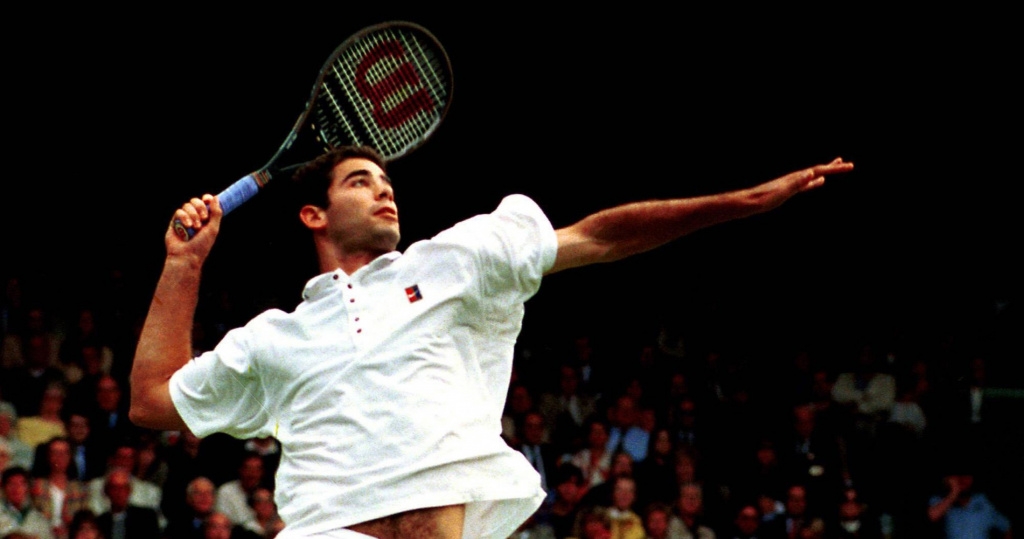
- Pete Sampras, American standard-bearer
Pete Sampras was born in 1971. Although he was a part of a golden American generation, along with Agassi, Chang and Courier, he was the last of them to become a top player. At the end of 1989, while his rivals had all claimed titles and achieved remarkable Grand Slam performances, Sampras was only No 81 in the world. In November that year, Ivan Lendl, world No 1 at the time, invited him to his house to practice with him for 10 days: the young American then realised what kind of work ethic was required to become a champion.
Six months later, he had already broken into the top 20 after having claimed his first two titles in Philadelphia and Manchester. In September 1990, he took the world of tennis by surprise by becoming the youngest player to ever triumph at the US Open, defeating Agassi in the final (6-4, 6-3, 6-2).
Thanks to this great win, he entered the top 10, but in 1991 and 1992, Sampras struggled to confirm his new status. He faced several big disappointments, such as losing his two matches in the 1991 Davis Cup final (against Frenchmen Henri Leconte and Guy Forget) and a cruel loss to Stefan Edberg in the 1992 US Open final (3-6, 6-4, 7-6, 6-2).
He said later that this last defeat had made him realise he couldn’t be satisfied with being No. 2. He became world No 1 on April 12, 1993, and at the time, it was criticised, as he hadn’t won a major tournament in more than two years, but in the second half of the year, and despite a two-week interruption in July, he was clearly above the pack.
Triumphing at both Wimbledon (defeating fellow American Jim Courier in the final, 7-6, 7-6, 3-6, 6-3) and the US Open (beating Frenchman Cédric Pioline, 6-4, 6-4, 6-3), Sampras accumulated eight titles throughout the year. His hold on the Tour grew stronger in 1994, when he claimed a third consecutive major crown in Melbourne (defeating Todd Martin, 7-5, 6-4, 6-4), and then managed to defend his title at Wimbledon at the expense of Ivanisevic (7-6, 7-6, 6-0).
Suffering an early loss at the US Open (lost to Jaime Yzaga in the fourth round, 3-6, 6-3, 4-6, 7-6, 7-5), he finished strong, defeating Boris Becker in the Masters Cup final (4-6, 6-3, 7-5, 6-4). At the 1995 Australian Open, he was defeated in the final by his old-time rival Agassi, but he took his revenge in the Indian Wells final (7-5, 6-3, 7-5), attempting to keep him at bay from the No 1 spot.
The place: Miami Open
The Miami Open, originally named the Lipton International Players Championship, was held for the first time in 1985, in Delray Beach, with the idea of it being the first big tennis event of the year (at the time, the Australian Open was held in December). The tournament moved to Key Biscayne in 1987, and Miloslav Mecir was the first to triumph at the new Crandon Park venue. The event was played on slow hard courts, in extreme heat and humidity. Nonetheless, with outstanding prize money and a 96-player draw, in the early 1990s, it was considered as the biggest tennis tournament in the world outside of Grand Slams.
The facts
In March 1995, the entire world of tennis had its eyes focused on the Sampras/Agassi rivalry. Sampras had been dominating the game without any serious rival from the summer of 1993 into the summer of 1994, and when the Las Vegas Kid, with the help of his new coach Brad Gilbert, reached his peak form, triumphing at both the US Open and the Australian Open, fans watched tennis with a whole new excitement. The two rivals couldn’t have been more different: their personalities, their game styles, their outfits. Everything was set for a great rivalry.
After having faced each other in the Australian Open final, they had set another final clash at Indian Wells, and, on March 26, they faced each other in the last round of the Miami Open. Twelve months before, in the same place, Agassi had agreed to delay the final so Sampras could recover from a stomach ache, a display of sportsmanship which had cost him the title. This time, he intended to show no mercy.
In the first set though, no matter how much Agassi wanted to win, there was not much he could do against Sampras’ firing serve. The world No 1 took the first set, 6-3, but in the second set, his opponent sharpened his returns. Agassi amazingly won 17 consecutive points to seal the set, 6-2. The players both held on to their serve during until the end of the deciding set. However, Agassi dominated the tiebreak, winning the last five points to prevail, 7-3.
“He kicked my butt (in Indian Wells),” Agassi said. “So I told my dad, who was having open-heart surgery, that I’d get him this week. I’d like to dedicate this to my father. (…) Pete was serving so big to start. He can really extend a 3-0 lead into 6-1, 6-3 victory really fast. We both were busting our butts. I want to thank Pete for coming out there and being such an incredibly class act, win or lose.”
“When it came down to the breaker, I played a little cautious and he really kept me deep,” Sampras said. “It came down to a couple points. I’m disappointed.”
Thanks to his victory, Agassi, who was now 25-2 in 1995, was only 227 points from Sampras on the ATP ranking, forcing him to defend his titles in Osaka and Tokyo in order to remain world No 1.
What next
The following week, the rivals would team up in the Davis Cup to defeat Italy. In fact, they would lead the United States to win the 1995 Davis Cup.
Sampras would not attend the tournaments he had won in Japan the previous year, and on April 10, Agassi would reach world No 1 for the first time in his career.
They wouldn’t face each other before the Montreal final, where Agassi would prevail again (3-6, 6-2, 6-3), but at the US Open, Sampras would triumph (6-4, 6-3, 4-6, 7-5), securing the year-end No 1 spot for the third straight time.
In total, these great champions would face each other 34 times, with Sampras leading 20-14. Their last meeting would happen in the final of the 2002 US Open, when Sampras would gloriously finish his career on a last win over his greatest rival (6-3, 6-4, 5-7, 6-4).
